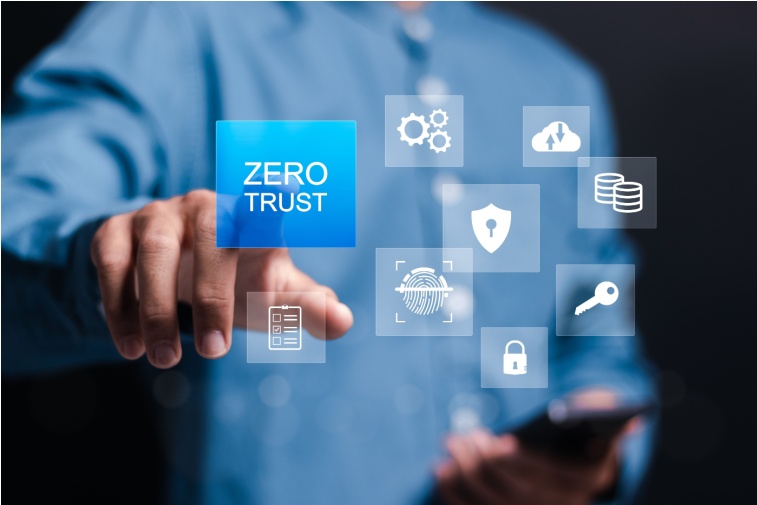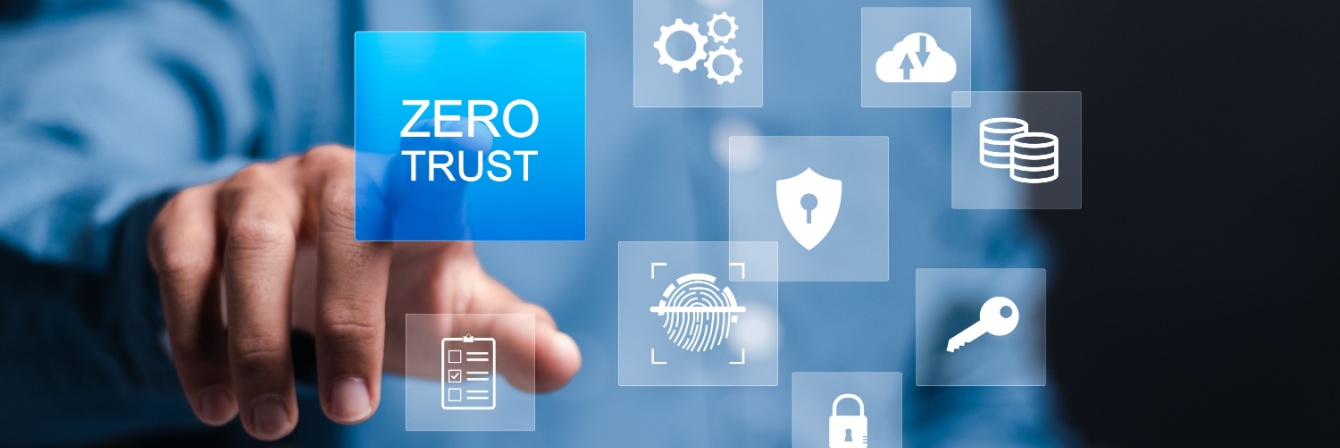Zero Trust Security: The Key to Modern Cybersecurity in Cloud Environments | Samsung SDS


In today's dynamic cybersecurity environment, the Zero Trust model has become indispensable, particularly as remote logins surged during Covid-19 and continue at elevated levels. With employees accessing systems globally, the security risk has intensified for both on-premise and cloud deployments. While Zero Trust principles offer substantial benefits for on-premise setups, they are vital for cloud-based environments. This importance is magnified in the cloud, where the often-overlooked shared responsibility model in security applies.
Real-World Applications of Zero Trust
Zero Trust is increasingly adopted across various sectors to secure networks against sophisticated cyber threats:
- Financial Services: Zero Trust frameworks help banks and financial institutions protect against advanced cyber threats targeting financial transactions.
- Healthcare: Zero Trust ensures that sensitive patient information is accessed securely and in compliance with HIPAA regulations, guarding against data breaches and unauthorized access.
- Government: Zero Trust strategies are crucial for securing sensitive government data and infrastructure against both external and internal threats.
The Zero Trust Philosophy
The Zero Trust model abandons the obsolete supposition that “internal network elements are inherently secure.” We should “trust but verify.” Zero Trust security, instead, mandates rigorous inspection of all network traffic and access requests, irrespective of their origin, upholding the principle that no entity inside or outside the network is trusted by default. In that regard, the Zero Trust model can be summarized as "never trust, always verify."
The Zero Trust architecture is designed to protect modern digital environments through strategic measures such as network segmentation, the prevention of lateral movement, Layer 7 threat prevention, and precise control of user access at a granular level. It aims not only to secure the code but to safeguard the entire digital ecosystem with a holistic view.
Enhancing Zero Trust for Cloud Transformation
As organizations increasingly transition to cloud infrastructures, integrating Zero Trust principles becomes critical for securing these environments and their applications:
- Least Privilege Access: Grant users only the access necessary for their specific roles, minimizing potential damage from compromised accounts and controlling unauthorized access.
- Continuous Verification of All Cloud Identities: Treat every access request as a potential threat, whether internal or external, until it is thoroughly vetted. Continuously validate each request at every stage of digital interaction through real-time security assessments to ensure both legitimacy and security compliance. Implement robust authentication methods, such as multi-factor authentication (MFA), and rigorously verify the identities and entitlements of developers, DevOps, and admins accessing cloud infrastructure.
- Microsegmentation: Particularly effective in cloud environments where traditional perimeter defenses are less effective, microsegmentation allows for detailed, customized security policies for each zone, thus enhancing data and application security. Segment networks into distinct, securely isolated zones, each with specific access controls. Ensure that all network connections between microservices enforce microsegmentation, with workloads mutually verifying each other’s identities and establishing least-privilege connectivity.
- Secure All Cloud Transactions: Once network access is granted, meticulously inspect all content and proactively mitigate any threats or malicious activities to safeguard transactions. Extend security measures to web applications and APIs throughout the application lifecycle within any cloud-native architecture to combat modern threats.
- Protect Cloud Workloads: Ensure continuous security across all hosts, containers, and serverless functions within any cloud environment. Regularly monitor these workloads for misconfigurations, vulnerabilities, or indicators of compromise.
- Integrate Security with Development and Infrastructure as Code (IaC): Embed security and compliance checks into development CI/CD pipelines and DevOps workflows in a shift-left approach. Providing security in runtime is harder and much costlier than creating codes that are free of critical vulnerabilities. Therefore, identify and fix critical vulnerabilities as the code is being developed. Establish safeguards against misconfigurations in the IaC templates.
Challenges in Implementing Zero Trust
Transitioning to a Zero Trust architecture poses significant challenges, including complex technological and organizational shifts:
- Complexity and Cost: Developing and maintaining a comprehensive Zero Trust architecture requires substantial investment in technology and expertise, involving various security solutions that collaborate to continuously monitor and control access requests.
- Organizational Culture Shift: Adopting Zero Trust requires a fundamental shift in how organizations perceive and manage security, potentially facing resistance from employees accustomed to more lenient access controls.
- Continuous Monitoring and Maintenance: Zero Trust is a dynamic model that demands ongoing adjustments and vigilance to adapt to new threats and changes in the operational environment, necessitating continuous investment in resources.
Conclusion
As digital transformation accelerates and more operations migrate to the cloud, implementing Zero Trust models is essential for protecting against evolving cyber threats. By consistently verifying every request, enforcing least privilege access, and leveraging advanced security technologies, organizations can significantly enhance their security, ensure compliance, and boost operational efficiency. Despite the challenges, the strategic benefits of a well-implemented Zero Trust architecture make it an indispensable strategy in contemporary cybersecurity.
Further Info
Zero Trust security, particularly for cloud environments, is addressed and supported by several key standards and frameworks.
These include:
- NIST Special Publication 800-207: This publication, "Zero Trust Architecture," offers detailed guidance on applying Zero Trust principles specifically tailored for modern IT environments, which include cloud architectures. It discusses how Zero Trust practices can be integrated with existing cloud-based systems and services.
- Cloud Security Alliance (CSA) Zero Trust Advancement Center: The CSA has resources and publications that discuss Zero Trust implementations in cloud environments, providing a maturity model and specific guidance on applying Zero Trust strategies to secure cloud resources.
- ISO/IEC 27017: This code of practice for information security controls based on ISO/IEC 27002 for cloud services adds to the broader ISO/IEC 27001 standard by addressing cloud-specific aspects of information security. It complements Zero Trust approaches by outlining controls that ensure the protection of personal data processed by cloud service providers.
- Microsoft Zero Trust Deployment Center for Azure: While not a standard or framework, Microsoft's guidance provides a practical implementation strategy for applying Zero Trust principles using Microsoft Azure cloud services. This resource is a comprehensive guide for organizations looking to implement Zero Trust in their Azure cloud environments.
- Google Cloud’s BeyondCorp Enterprise: Google has developed its own implementation of Zero Trust, known as BeyondCorp, which they utilize internally and offer as a service through Google Cloud. This model focuses on access controls and security monitoring to enforce Zero Trust in cloud operations.
Connect with Us
Contact Us and Learn More about our cloud solution.
